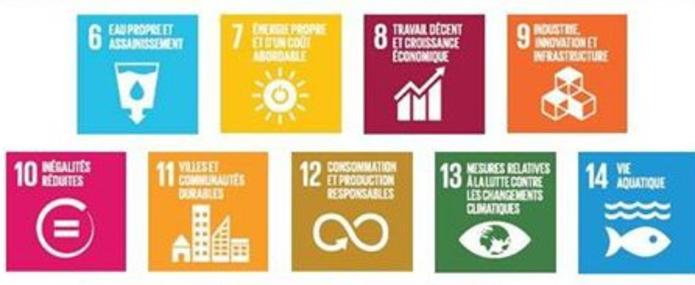The Agenda 2030 for sustainable development must be implemented at the national level. All countries are involved, as much in the North as in the South. Each country, based on its own characteristics, must guide its development strategy towards greater sustainability. However, the challenges and the available means to achieve this objective are fundamentally different and uneven from one category of countries to the next. The universality of SDGs implies that the sustainability of a country’s national strategy should not impede those of another. In other words, even though the SDGs apply to all countries, they cannot be applied on an individual basis without reference to others. The future of LDCs should be at the heart of their implementation in developed countries.
SDGs, an issue of international fairness…
The Sustainable Development Goals (SDGs) represent an indivisible and universal agenda: all countries should address all objectives (most of which are interconnected), each having to equip itself to implement the policies and transformations necessary to achieve the objectives. According to Ban Ki-moon (June 2015)[1], “universality implies that all countries will need to change, each with its own approach, but each with a sense of the global common good”.
Universality means that all countries will need to change, each with its own approach, but each with a sense of the global common goodCapacity (including institutional and financial) varies considerably from one country to another, from one region to another; the implementation of the 2030 Agenda for Sustainable Development – as well as the Paris Agreement on climate – will thus take place only under the principle of “common but differentiated responsibilities and respective capabilities”, enacted in the Rio Declaration (1992).
…that must be formulated within the framework of national strategies
For rich countries, this issue of fairness will have to be part of their own renewed sustainable development strategies: financing and development aid policies must be coherent with the domestic development policies of LDCs. The needs of LDCs in terms of funding are immense. They are more vulnerable to shocks (environmental, economic) than richer countries, mainly due to weaker institutions and infrastructure. A report by the Overseas Development Institute (ODI) in April 2015[2] indicated that funding to enable LDCs to achieve a single SDG target on health, education and poverty would amount to $148 billion per year (i.e. today’s entire annual official development assistance [ODA] total, from which LDCs receive only a small part). According to a 2015 OECD study[3] published a few weeks before the Addis Ababa conference on financing for development, in 2014 LDCs received $38 billion from the OECD’s Development Assistance Committee (DAC); this total has decreased since 2010 and represents only 0.10% of the gross national income of DAC members, while the threshold target set by the UN is 0.15%. Beyond ODA, we refer here to the mainstreaming of different funding sources (public, private) targeted towards sustainable projects and development. Regarding capacity building, the SDGs (2015-2030), which are an each for all and all for each agenda, require each country to have the necessary technical, institutional and democratic capacities to define the sustainable development strategy that they will design and finance, even more so than the Millennium Development Goals (MDGs) (2000-2015), which were the agenda of some (Northern countries) for others (Southern countries). In LDCs, local stakeholders, including civil society organizations, must be able to support States through active participation in the process; while developed countries and their various public and private actors will have to continue and intensify their contribution to the SDG policy development effort, through technology transfer and support, along with the strengthening of management, research and innovation capabilities. Finally, Northern countries should ensure their sustainable development strategies do not create additional difficulties for other countries, specifically LDCs. For example, the definition of trade policies to support green technologies, the implementation of climate change adaptation measures or certain decisions on energy (relocation of polluting industries) and agriculture that may be relevant from an environmental perspective within one country, could all prove counter-productive for LDCs and slow down the deployment of their sustainable development strategies. Will the SDGs manage to achieve what the MDGs failed to fully realise, i.e. the establishment of a development partnership that effectively contributes to a truly inclusive sustainable development? [1] See article: U.N. chief: We can end poverty, hunger [2] See report: Financing the future. How international public finance should fund a global social compact to eradicate poverty [3] See article: Taking stock of aid to least developed countries (LDCs)


